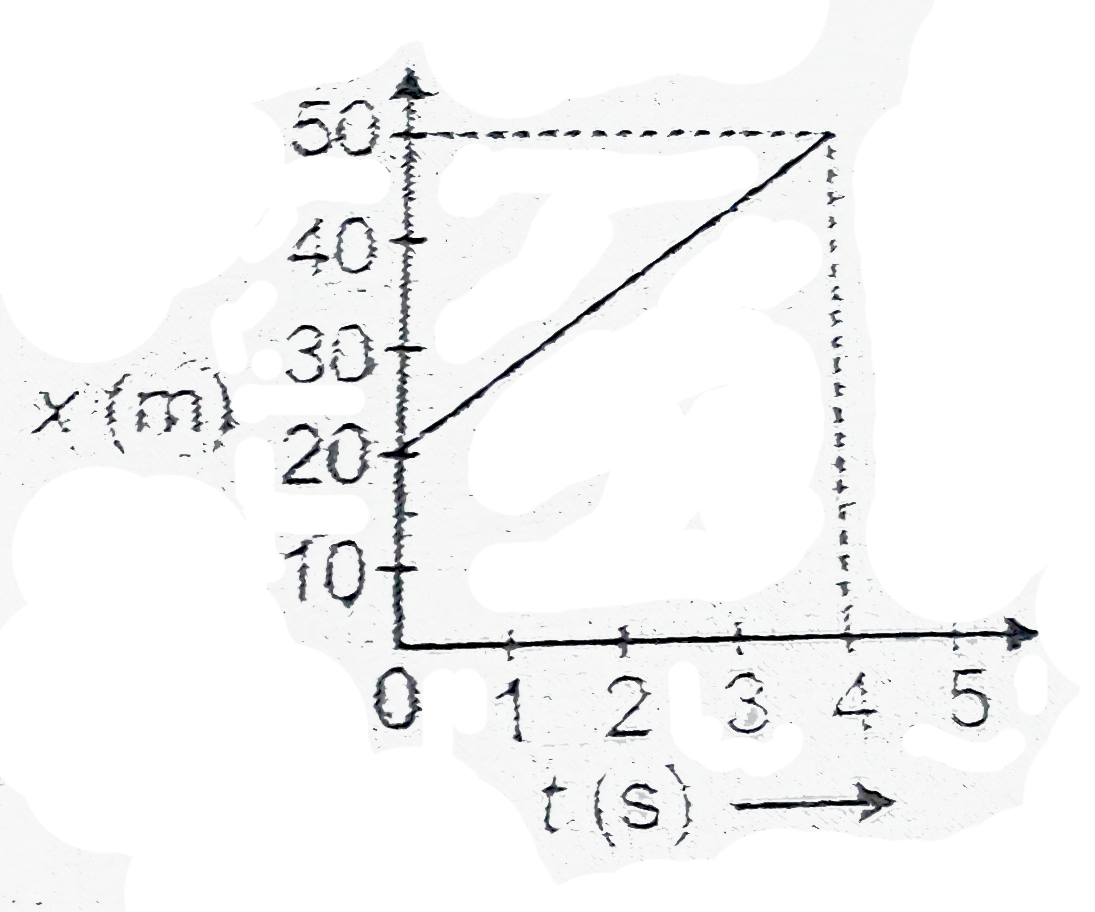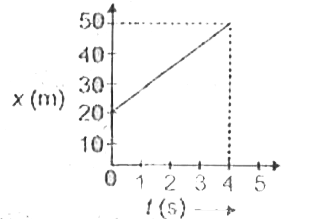A 2.0 kg object moves in a straight line on a horizontal frictionless surface. The graph in the given figure shows the velocity of the object as a function of time. The various equal time intervals are labeled using Roman numerals: I, II, III, IV, and V.
The net force on the object always acts along the line of motion of the object.

In which section(s) of the graph is the net force changing ?
I and III
II and IV
III
I and V
The correct Answer is:D
Step by step video, text & image solution for A 2.0 kg object moves in a straight line on a horizontal frictionless surface. The graph in the given figure shows the velocity of the object as a function of time. The various equal time intervals are labeled using Roman numerals: I, II, III, IV, and V. The net force on the object always acts along the line of motion of the object. In which section(s) of the graph is the net force changing ? by Physics experts to help you in doubts & scoring excellent marks in Class 12 exams.
Updated on:21/07/2023Topper's Solved these Questions
- FORCE AND MOTION - I BOOK - RESNICK AND HALLIDAYCHAPTER - FORCE AND MOTION - I EXERCISE - PRACTICE QUESTIONS (Matrix-Match)
7 Videos
- FORCE AND MOTION - I BOOK - RESNICK AND HALLIDAYCHAPTER - FORCE AND MOTION - I EXERCISE - PRACTICE QUESTIONS (Integer Type)
3 Videos
- FORCE AND MOTION - I BOOK - RESNICK AND HALLIDAYCHAPTER - FORCE AND MOTION - I EXERCISE - PRACTICE QUESTIONS (More than One Correct Choice Type)
5 Videos
- FLUIDSBOOK - RESNICK AND HALLIDAYCHAPTER - FLUIDSEXERCISE - PRACTICE QUESTIONS (Integer Type )
5 Videos
- FORCE AND MOTION-IIBOOK - RESNICK AND HALLIDAYCHAPTER - FORCE AND MOTION-IIEXERCISE - PRACTICE QUESTIONS (Integer Type)
1 Videos
Similar Questions
Knowledge Check
A 2.0 kg object moves in a straight line on a horizontal frictionless surface. The graph in the given figure shows the velocity of the object as a function of time. The various equal time intervals are labeled using Roman numerals: I, II, III, IV, and V.
The net force on the object always acts along the line of motion of the object.
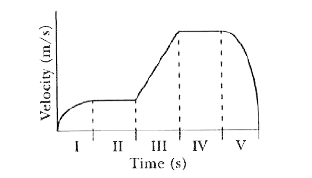
In which section of the graph is the magnitude of the net force decreasing ?AIBIICIIIDIVA 2.0 kg object moves in a straight line on a horizontal frictionless surface. The graph in the given figure shows the velocity of the object as a function of time. The various equal time intervals are labeled using Roman numerals: I, II, III, IV, and V.
The net force on the object always acts along the line of motion of the object.
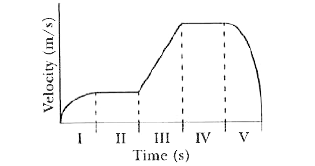
Which section of the graph corresponds to the application of the largest constant net force ?AIBIICIIIDIVAn object is moving along a straight line in the positive x direction. The graph shows its position from the starting point as a function of time. Various segments of the graph are identified by the letters A, B, C, and D.
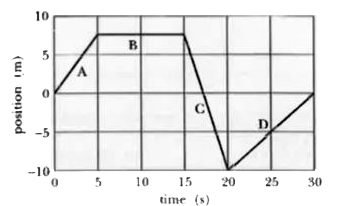
What was the instantaneous velocity of the object at the end of the eighth second ?A+7.5 m/sB+9.4 m/sC0 m/sD+9.0 m/s
The position-time graph of an object is given below. What is the velocity of the object?
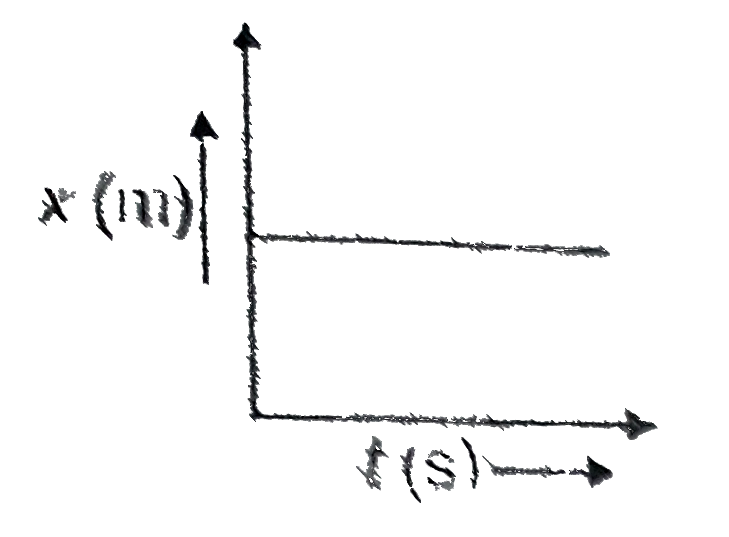
View SolutionThe position - time graph of an object is given below. What is the velocity of the object?
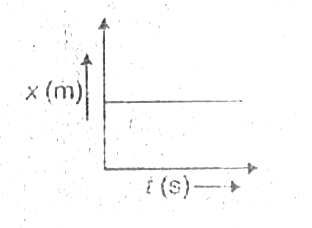
View SolutionWrite some uses of velocity-time graph of an object in uniform motion.
View SolutionDuring motion of an object along a straight line, the change in velocity of the object for any time interval is zero.
View SolutionAn object is moving along a straight line in the positive x direction. The graph shows its position from the starting point as a function of time. Various segments of the graph are identified by the letters A, B, C, and D.
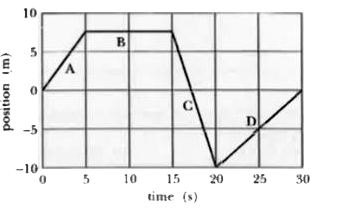
During which interval(s) did the object move in the negative x direction ?
View Solution

